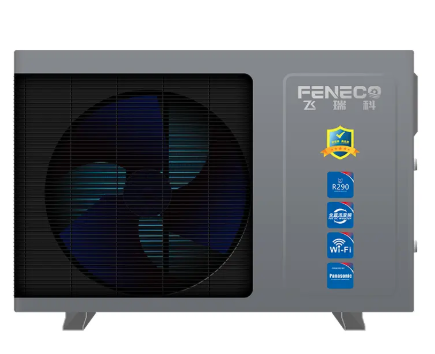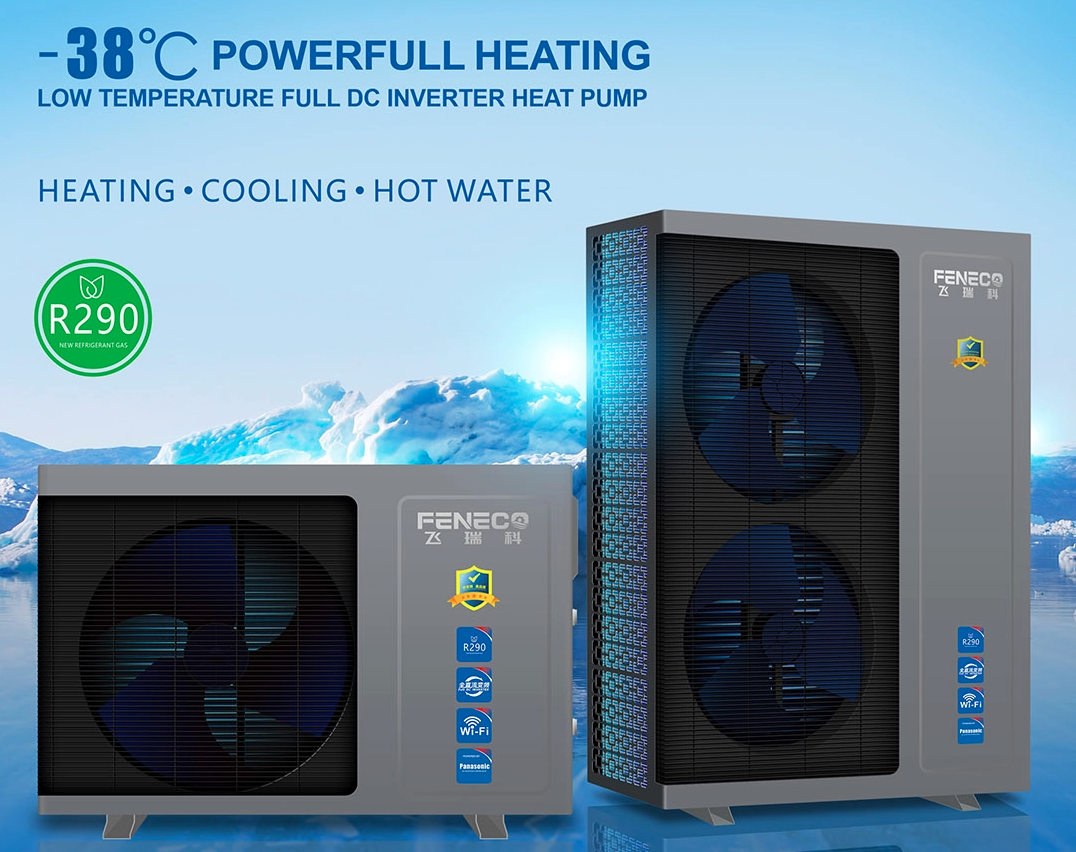Views: 0 Author: Site Editor Publish Time: 2025-09-13 Origin: Site








A heat pump provides both heating and cooling, making it a smart, energy-efficient choice for homes and businesses. Advanced options like DC Inverter Multifunctional Heat Pumps adjust output for efficiency, while Heat Pump Driers offer reliable performance in laundry or industrial settings.
But how long do these systems really last? Factors like installation, usage, climate, and maintenance all play a role. In this guide, we’ll explore typical heat pump lifespans and share tips to extend performance and efficiency.
Heat pumps are versatile systems that provide both heating and cooling, unlike traditional furnaces or air conditioners that focus on one function. Typically, a standard heat pump lasts 10 to 15 years, while ductless mini-split heat pumps may survive 20 years or more under proper installation and maintenance.
Advanced systems like the DC Inverter Multifunctional Heat Pump are designed to operate efficiently across variable outdoor temperatures, reducing wear and tear. Meanwhile, Heat Pump Driers, commonly used in laundry or industrial settings, benefit from controlled load cycles and often outlast conventional units in those applications.
A heat pump’s lifespan is influenced by multiple factors: how often it runs, how it’s maintained, and the environment it operates in. Understanding these variables can help homeowners maximize their system’s efficiency and longevity.
1. Quality of the Unit
Premium heat pump brands usually offer more durable components, higher efficiency, and longer warranties. Warranties often serve as a reliability indicator—longer coverage suggests the manufacturer expects the unit to last.
2. Installation Accuracy
A poorly installed system can waste energy, reduce comfort, and wear out faster. Using Manual J load calculations ensures the heat pump is the correct size for your home or business. Over- or under-sizing can lead to short cycling or constant operation, which drastically shortens its lifespan.
3. Usage Patterns
Frequent extreme temperature settings, prolonged operation in hot summers or cold winters, and heavy usage in applications like Heat Pump Driers increase wear. Moderate indoor temperatures and efficient scheduling reduce strain.
4. Climate Influence
Heat pumps in mild climates typically last longer than units in extreme heat or cold. DC Inverter Multifunctional Heat Pumps can adjust output to adapt to outdoor conditions, which can improve longevity in harsh climates.
5. Maintenance Routine
Regular professional inspections, filter changes, and cleaning are crucial. Neglecting maintenance leads to energy inefficiency, decreased performance, and premature component failure.
Tip: Combining a quality unit with proper installation and consistent maintenance often allows heat pumps to exceed the typical 10–15 year lifespan.
| Heat Pump Type | Typical Lifespan | Key Notes |
|---|---|---|
| Air Source Heat Pump | 10–15 years | Common for residential heating/cooling |
| Ductless Mini-Split Heat Pump | 10–30 years | Flexible, easy to maintain, ideal for smaller spaces |
| Geothermal Heat Pump | 20–25 years | Uses underground loops, very stable |
| Heat Pump Drier | 10–20 years | Designed for laundry or industrial use |
| DC Inverter Multifunctional Heat Pump | 15–25 years | Intelligent control reduces wear, energy-efficient |
Each type has unique benefits. For example, Heat Pump Driers excel in energy-intensive applications, while DC Inverter Multifunctional Heat Pumps offer precise temperature control, reducing strain on components over time.

Even the best-maintained heat pumps eventually show signs of decline. Recognize the following indicators:
Decreased Performance: Struggling to reach set temperatures, uneven heating/cooling, or poor humidity control.
Frequent Repairs: Repeated breakdowns indicate that key components may be wearing out.
Rising Energy Bills: Unexpected increases suggest your system is working harder than it should.
Age Beyond Warranty: Most residential heat pumps are covered for 10–12 years. Past this period, repairs become costlier.
Tip: If you own a DC Inverter Multifunctional Heat Pump or Heat Pump Drier, monitoring performance and maintenance records can help prevent sudden failures.
Selecting the right size is critical. Oversized units lead to short cycling, which prevents proper air mixing, increases humidity, and creates uneven temperatures. Undersized units run constantly, causing excessive wear.
A Manual J load calculation considers windows, insulation, occupancy, and orientation, ensuring the heat pump or Heat Pump Drier meets demand without unnecessary strain.
Even a high-quality unit fails if installed incorrectly. Proper commissioning guarantees all components operate as intended. Poor installation can lower efficiency, cause noise, and void warranties.
Tip: Hire HVAC professionals with experience in DC Inverter Multifunctional Heat Pumps and Heat Pump Driers to ensure longevity from day one.
Professional maintenance twice a year keeps your system efficient:
Check refrigerant levels and electrical components
Inspect coils and fan operation
Ensure mechanical parts move freely
A Heat Pump Drier also benefits from coil cleaning and condensate checks to avoid operational stress.
Clogged filters force your heat pump to work harder. Replace or clean:
One-inch filters every 3 months
Thicker or washable filters every 6–12 months
Proper airflow prevents overworking components and maintains indoor air quality.
Dust in ducts and debris around outdoor units decreases efficiency.
Clean ducts and coils reduce energy usage and prolong system life.
Heat Pump Driers also require clean air pathways to maintain drying performance.
Tip: Regular cleaning can prevent minor issues from becoming costly repairs.
Keep It Clear: Ensure that the outdoor unit is free from leaves, grass clippings, and snow. These can block airflow and reduce efficiency. Regularly clear debris to maintain optimal performance.
Check for Damage: Inspect the outdoor unit for any signs of damage, such as dents or rust. Address these issues promptly to prevent further damage and maintain efficiency.
Refrigerant Levels: Ensure that the refrigerant is at the correct levels. Low refrigerant can lead to reduced efficiency and potential damage to the system. Regular checks can help maintain performance.
Lubrication: All mechanical parts should be properly lubricated. This reduces friction and wear, extending the life of your heat pump and ensuring smooth operation.
Programmable Thermostats: Use programmable thermostats with DC Inverter Multifunctional Heat Pumps to reduce unnecessary operation. These thermostats can be set to adjust temperatures automatically based on your schedule, saving energy and reducing bills.
Smart Settings: Take advantage of smart settings on modern thermostats. Features like geofencing can adjust the temperature when you’re away from home, ensuring the system only runs when needed.
Professional Inspections: Schedule seasonal inspections with professionals familiar with heat pumps, Heat Pump Dryers, and multifunctional units. Regular maintenance can identify and address issues before they become major problems.
Preventive Maintenance: Don’t wait for something to go wrong. Preventive maintenance, such as cleaning coils and checking electrical connections, can keep your heat pump running smoothly and efficiently.
Clean Air Filters: Regularly clean or replace air filters. Dirty filters restrict airflow and reduce efficiency. Aim to replace filters every 1-3 months, depending on usage and the type of filter.
Inspect Ductwork: Check for any leaks or damage in your ductwork. Sealing leaks and ensuring proper insulation can significantly improve the efficiency of your heat pump system.

A1: Typically 10–30 years if maintained properly.
A2: Absolutely. Cleaning coils, filters, and condensate pans prevents wear and prolongs operational life.
A3: Short cycling, constant operation, or uneven temperatures are signs of improper sizing. A Manual J calculation ensures proper capacity.
A4: Yes. Hot summers and freezing winters increase workload and accelerate wear.
Heat pumps, Heat Pump Driers, and DC Inverter Multifunctional Heat Pumps provide efficient year-round comfort. Their lifespan depends on installation, maintenance, usage, and climate. Regular care and professional inspections keep these systems running efficiently, saving energy and extending service life. For reliable and high-performance solutions, consider products from Fineco New Energy Technology Co., Ltd, a trusted provider of advanced heat pump systems designed to maximize efficiency and durability for both residential and commercial applications.
